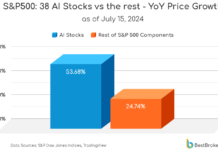
With the first quarter nearly in the rearview mirror, global automotive production figures in in Q1 are expected to expand by 12% vs 2020 once final tallies are in, as the auto industry recovery from the pandemic is being challenged by the perfect storm of month-long capacity constraints at the juncture of becoming a choke point for the sector as well as isolated natural disasters.
First, the global semiconductor shortage due to capacity constraint and lack of inventory for microcontrollers, the majority of which are sourced from one supplier in Taiwan. Next, a Texas snow/ice storm hit, which shuttered chemical plants and forced raw material shortages for seat foam and airbag materials, while also forcing three semiconductor plants to shut down, further contributing to the shortage. And the recent fire at a semiconductor manufacturer in Japan has hampered several OEMs, some of which had so far managed to avoid impacts from wider semiconductor shortages. Additionally, concerns around the impact of steel inventory shortages in light of surging demand from multiple industries are beginning to emerge across multiple industries, including the automotive sector. Lastly, delays at US ports for capacity constraints to handle a surge in container deliveries are leaving automakers and suppliers wondering about transit times for their parts and the Suez Canal conundrum is bound to also have an impact, though it is not yet certain on the specific aspects.
As OEMs and suppliers continue to evaluate the resiliency of their supply chains and inventories as well as adapting their OEM schedules to reflect these, IHS Markit analysts have been keeping abreast of developments.
As of this writing, IHS Markit forecasts the implications on Global light vehicle production to be estimated at 1.3 million units across the first quarter. The fire at Renesas’s Naka facility in Japan, which broke out in the morning of Friday 19th March and ongoing disruption following the severe weather that hit the south west United States in February means that we are more cautious about the speed and level of recovery we will see in 2021. The affected semiconductor operations in both Japan and United States are expected to be offline for at least a month and will take longer to return to full capacity adding to the burden that the industry is facing. These latest impacts to global semiconductor supply lead us to think that Q2 could be as exposed as Q1, while stabilization of supply may not emerge until Q4, with recovery efforts starting only in early 2022.
Much of the impact on new vehicle sales remains to be seen at this stage, as inventory levels remain healthy enough to meet today’s demand. As time goes on, the availability of high volume, popular vehicles may be an issue in larger markets.
“With production in Q1 expected to expand by 12 percent vs 2020, the auto industry recovery from the pandemic is being challenged by the perfect storm of month-long capacity constraints at the juncture of becoming a choke point for the sector as well as one-off challenges of natural disasters,” said Matteo Fini, Vice President, Automotive Supply Chain, Technology and Aftermarket, IHS Markit.
There is anecdotal evidence that auto suppliers’ restocking in various sectors now that a recovery of volume demand is materializing is adding to the problem, it remains to be seen whether this will result in sporadic or ongoing auto plant shutdowns.
Semiconductors update
On February 15th, NXP’s, Infineon’s and Samsung’s fabs in and around Austin, TX were forced to shut down due a winter storm that disrupted power and water supplies. The week-long closures will be felt for months. Infineon announced last week that they expect the fab to reach pre-shutdown output level in June. Samsung is reportedly targeting mid-April to start output again, but it is unknown if capacity will be at pre-shutdown levels, or if those will occur later.
Renesas’ recent fire in the 300 mm cleanroom at its Naka fab in Japan impacted a small area of the fab but it damaged water supply, air conditioning and manufacturing equipment. In an update, Renesas reports 23 machines must be replaced. 11 units will be procured by end of April but some of the machines may not be procured until after June. While production will restart 2 months after the fire, Renesas does not expect to recover full production capacity before 100 days after the fire.
While the shutdowns in Texas and Naka are known issues, there is a potential issue looming in the near future worth highlighting now too. Taiwan is experiencing its worst drought in decades. Making semiconductors requires large amounts of ultra-pure water. A water shortage in the region means less available water for all activities. While TSMC and UMC are able to recycle over 85% of their water, additional water is required, on the order of tens of millions of gallons/day. Reservoirs are holding only about 10% of their capacities.
“Contingency plans are for water to be trucked to the fabs as needed, but given how 2021 has gone so far for the semiconductor supply chain, the water situation is worth putting on the list of ‘things to watch,’” said Phil Amsrud, senior principal automotive semiconductor analyst, IHS Markit.
However, the supply chains are all tight currently and coupled enough that disruptions to non-automotive markets impacts the automotive sector. The original expectation for the auto supplies of semiconductor-content impacted by shortages to begin to be in a better position in Q2 and by Q3 and able to meet ongoing demand now appears optimistic, with a likely slippage by a quarter, with Q4 now looking like the first opportunity for supply to keep up with demand. However, IHS Markit estimates it will be Q1 2022 before there will be enough capacity to keep up with demand and to begin filling missed backlog.
Other shortages
Several auto parts are also potentially at risk of disrupting auto production due to their own upstream supply chains generally running tight on inventory and slowly recovering demand, thus magnifying the impact of natural disasters or various plant outages. The impacts of these events might become apparent any time between two to ten weeks at the OEM plant level. For example in the case of polypropylene, a key raw material for the auto industry used in bumpers, carpets and other applications is facing tighter than normal supply due to the combination of lack of feedstock, plant outages and transit bottlenecks due to lack of containers and longer than expected transit times as ports have limited the ability to compensate on a global basis from available capacity. Such situation is not expected to resolve before May.
With the Suez Canal blocked for six days after the Ever Given ran aground on March 23, and a significant backlog of ships now having to make their way through, automakers and suppliers are fretting about their parts availability.
The Suez Canal is a key source for auto parts with some $1.7 billion worth of parts being shipped in a normal year northbound into European ports (60 percent of which are from Japan and China, 20 percent from South Korea) and $1.3 billion shipped southbound, three quarters of which go into China.
Even if the blockage is resolved within a week, there may be delays in port operations in handling the increased volumes, thus creating sourcing bottlenecks for automakers and suppliers. Visibility into the impacted companies and supplies remains limited to date.
Steel production is also being caught in these shortages, particularly in the US. IHS Markit steel experts report that US steel plants’ utilization averaged 76% in February, still down from an average of 82% in February 2020 but up sharply from the pandemic low of 51% in early May 2020. As the restart of steel production has been slow in recovering from the pandemic and OEMs ramp up demand and replenish their inventories, shortages are beginning to emerge.
Coil Steel Spot prices have increased in averaged spot price by $687 per metric ton since Q3 2020 for three main steel categories in use in the automotive sector, adding about $350 per vehicle. Any OEM with short inventory in the US will be facing such prices.
“A recurring theme in all of these shortages or capacity constraints is an increase in prices for raw materials, which suppliers will have to pass onto OEMs and later onto consumers,” said Fini. “However, such process is not immediate and not to be taken for granted.”
Some raw material cost increases are indexed so an increase in raw material prices results in an input cost increase for OEMs and suppliers, but for many others this is not the case, which often means the OEM or the suppliers will be called upon to absorb such increases depending on the case.
IHS Markit analysts are continuing to track all of these issues and we may be in a position to share additional updates as forecasts are adjusted to incorporate the latest OEM announcements and factors.

















